This week's five highlights
Riksbank Deliver 25bps and More to Come
Ueda Reinforce BoJ July's Hawkish Policy Take
ECB Policy Clues from July Accounts and Lane
Canada July CPI Shows monthly gains but yearly growth fall
China Housing Needed More Bailout
Figure: Riksbank Policy Rate (%)
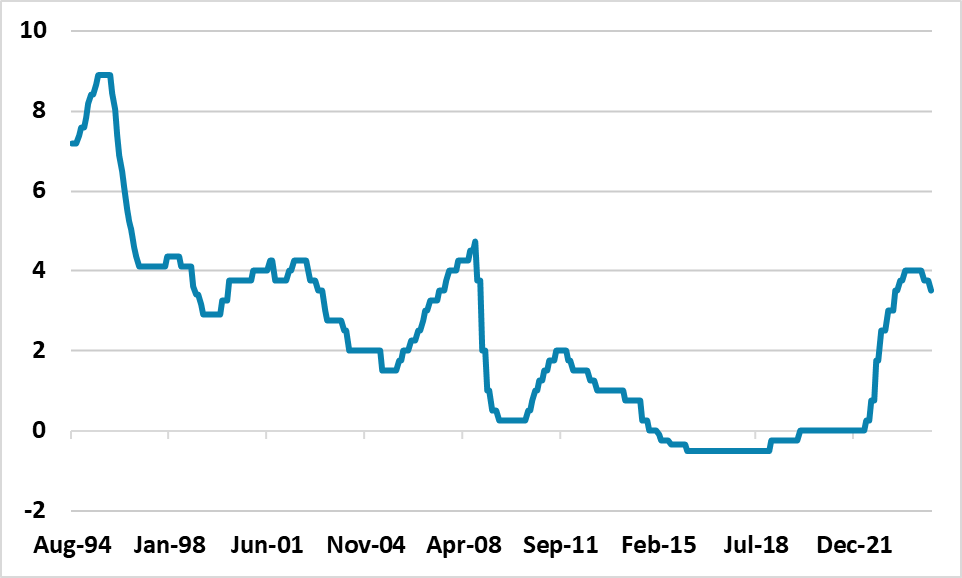
Riksbank appear more concerned about a weak economy, which is causing forward guidance of a faster pace of easing after today’s 25bps cut to 3.50%. We look for 25bps cuts at the September and December meeting and a further 25bps is possible at the November meeting if inflation remains under control and further real sector disappointment is seen.
Though the Riksbank delivered the 25bps cut to 3.50% as expected, the statement indicated that the Riksbank would be looking to cut a further two to three times in 2024 and this is more dovish than June. Key points to note.
· Riksbank concerned about weak economy. The Q2 GDP figures were disappointing for the Riksbank, with the statement noting that the interest rate sensitivity sector of the economy (consumption and investment) have disappointed. Given the quick and strong feedthrough of the Riksbank tightening cycle, it could be argued that the Riksbank are perhaps concerned that they tightened too much.
· Inflation is seen to be under control. Recent inflation numbers certainly increase the confidence that 2% inflation has been achieved, with wage growth under control and corporate profit margins being squeezed by the weak economy. With unemployment now rising, plus sluggish growth, the risk of an inflation undershoot exists and it will be interesting to see new projections at the September 25 meeting.
· Easing more quickly. The guidance has not just shifted to two further cuts, but the potential for three cuts before year-end. We had already projected two further cuts and these will most likely be deliver in September and December when new projections are published. A 3rd cut in November is feasible depending on the real sector data in the next few months and whether CPI surprises on the downside.
· Market pricing three more cuts in 2024. After the statement the money market has moved to now discounting 25bps at the September, November and December meetings. Additionally, further easing is seen in 2025, getting down to a 2.0% in 1 year and terminal policy rate of 1.75%. The Riksbank did not comment on the shift in market expectations lower since the June meeting, but should around the September meeting.
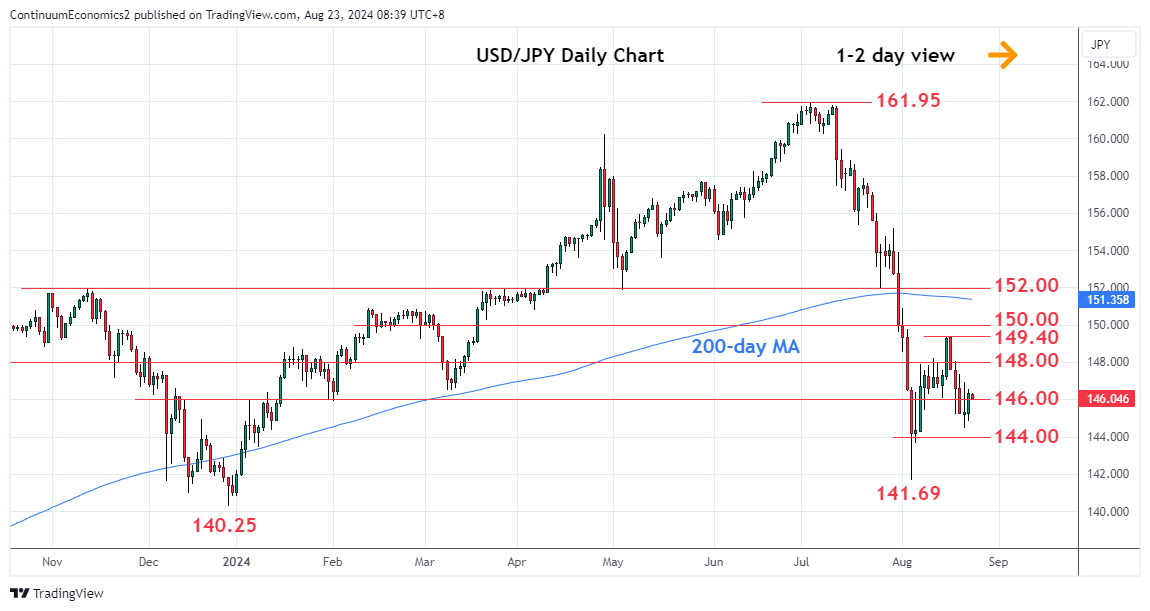
BoJ's Governor Ueda spoke in front of the parliament on Friday and reinforced the bank's policy tilt towards more tightening. While the caveat is always "if inflation forecast plays out", the hawkish tilt from the BoJ cannot be neglected, especially when National CPI lingers just below 3% in July. Deputy Governor Uchida's previous remark seems to be merely an attempt to verbal support the Japanese equity market when it crashed by more than ten percent, instead of a policy pivot. It means JPY should see medium term strength when yield differentials further narrows towards the end of year when Fed cuts.
On the chart, USD/JPY is higher in range from the 144.45 mid-week low as prices extend consolidation around the 146.00 level. Mixed daily studies suggest further ranging action here with resistance at the 147.00/35 congestion then the 148.00 level. While the latter caps, scope is seen for pullback to retest the 144.45 low then the 144.00 congestion. Would take break here to see extension to the 143.00 level. Below the latter will open up the 141.69 low to retest and where break will extend the broader losses from the July high.
Figure: Eurozone Economic Sentiment Indicator (%)
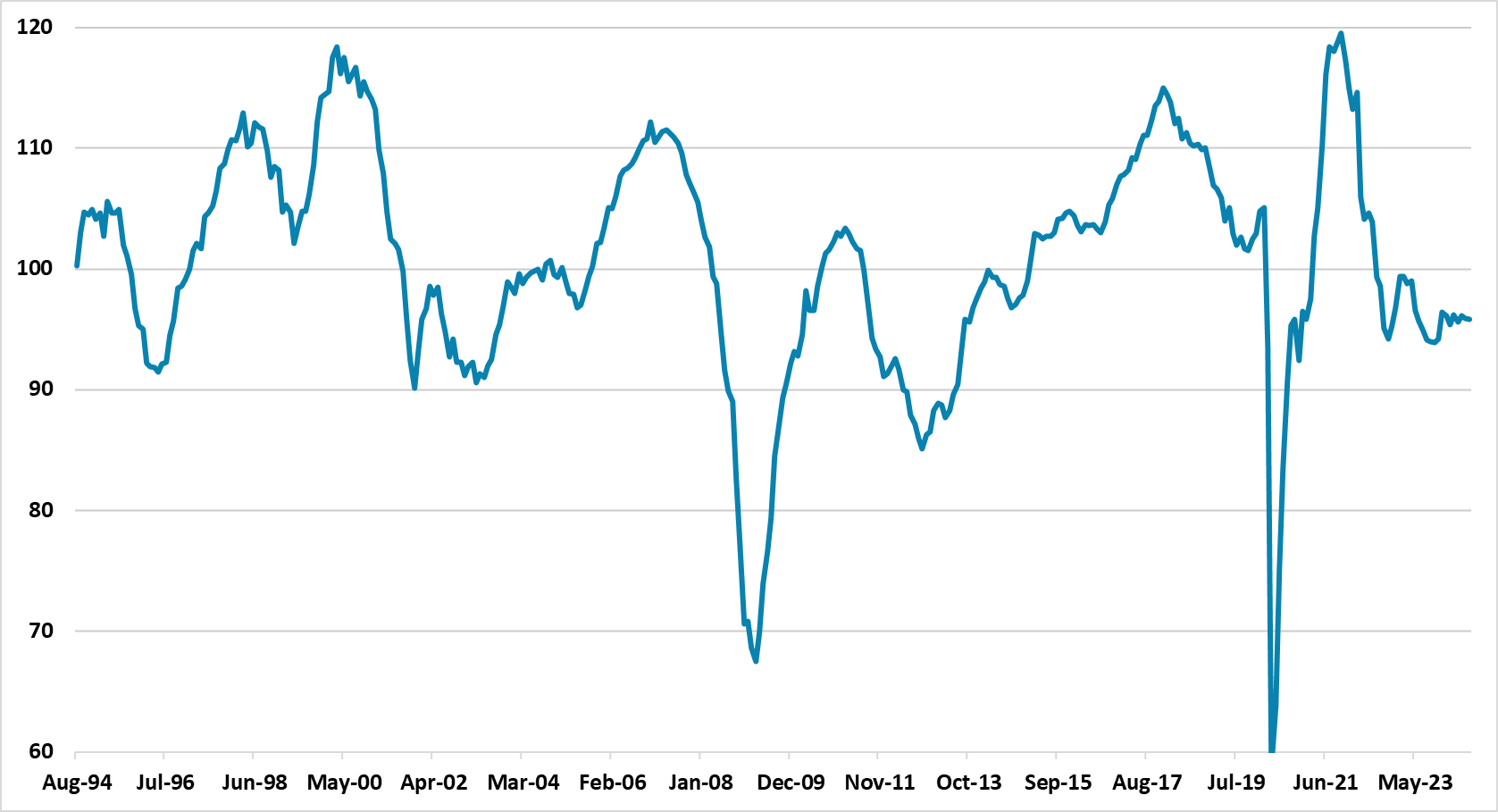
Elements of the July accounts help build confidence in more easing we expect ECB Lane Jackson Hole speech on Saturday to also provide comfort in near-term rate expectations. However, it is clear that key ECB board members do not want to be as clear as the run-up to the June meeting, but this could partially be internal politics and reserving the decision for the September 12 meeting. We see the three key criteria as influencing the ECB to deliver a 25bps cut in key policy rates at the September 12 meeting.
ECB forward guidance is an art rather than a science, with the July meeting accounts providing clues but also less divergence than the June meeting. One of the reason for less division than June is that no proposal existed for a cut. However, the underlying issue is that the hawks place more weight on actually seeing inflation sustainably hit target, which then shapes their views on what to do with policy rates. This will likely be evident once again at the September meeting when the doves will push for a 25bps cut – the July accounts indicated that the September meeting would be a good time to reevaluate restriction.
Otherwise, the long discussion on economy/inflation and policy, were for a change very much in line with the views communicated in the introductory statement and additionally in President Lagarde Q/A. A couple of points are worth noting. Firstly, the July accounts indicated that members were keen for wage growth to come down, which has now started to come through with the sharp drop in negotiated wages to 3.6% with the figures released today. Secondly, uncertainty exists on the economic and inflation trajectory. While these risks around the baseline have been highlighted, it was interesting that a discussion occurred on whether the ECB thinking was too dependent on a consumer recovery – especially with the savings rate drifting up.
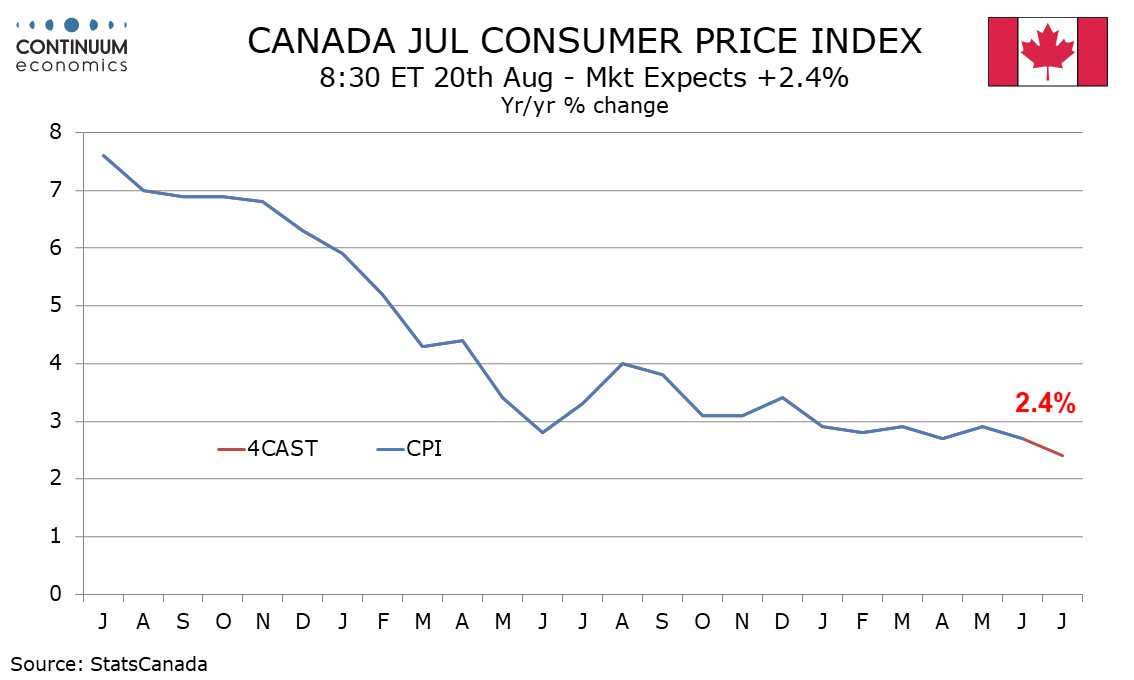
We expect July Canadian CPI to show a monthly gain in line with a recent moderate trend, but year ago strength will see yr/yr growth to slip from 2.7% in June. We expect CPI to rise in the month both overall and ex food and energy, the latter in line with June’s outcome and three of the last four months. We expect energy to be neutral after declining in May and June.

On the chart, USD/CAD's steady losses are finding support just above the 1.3560 Fibonacci retracement, as intraday studies turn higher and oversold daily stochastics flatten, with prices currently balanced around 1.3600. Continuation towards resistance at 1.3650 cannot be ruled out, but the negative daily Tension Indicator and bearish weekly charts are expected to limit any tests in fresh selling interest. Following cautious trade, further losses are looked for. However, a close below the 1.3560 Fibonacci retracement is needed to turn sentiment negative once again and extend August losses towards the 1.3470 retracement and congestion around 1.3500.
Figure: Inventory of Completed House (Number of Months)
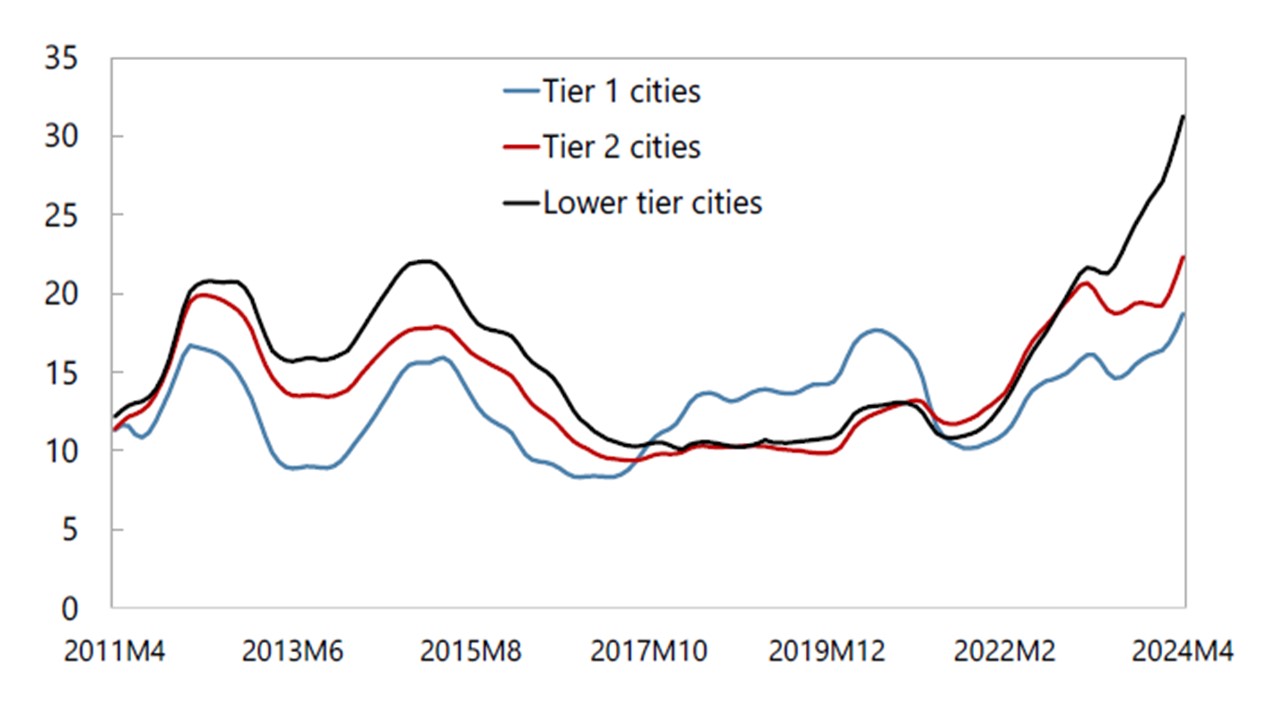
Though China’s authorities have taken some action to help the residential construction sector, the negative drags from the huge excess completed housing and uncompleted projects continues to weigh directly on the construction/steel and cement sector and consumer confidence. Aggressive policy action is need to stabilize the housing market otherwise the effects will remain and could get larger. China authorities for now however are focused on incremental policy support.
The epicenter of the growth drag on China economy is currently the residential property sector, where new construction remains a drag on GDP growth. China authorities have had a number of policy packages with some of the key highlights being Yuan500bln of PBOC pledged supplementary lending to support completing construction; Yuan300bln to buy excess completed inventory for affordable housing; mortgage rate cuts; lower deposits and recent a removal of new home price declines (new home sales have been depressed by second hand home prices falling more).
While the measures are welcome, they are not enough given the scale of the problem. Firstly, a large excess of completed inventory exists, which is restraining the market (Figure 1). Secondly, an even larger overhang of uncompleted housing is still in the pipeline, with delay spreading financial distress among more developers and some households that pre-paid for properties. Thirdly, population aging means that demand for housing is slowing sharply this decade (Figure 2). In some ways this is as bad as the 2006-10 U.S. housing market crash in construction investment terms (Figure 3). Though house prices have fallen by less than the U.S., China’s recent willingness to allow greater new house price declines has seen price falls of 20% plus in Beijing and Shenzhen in some new projects recently – which will initially hurt perceptions of housing wealth and produce a further adverse feedback loop.